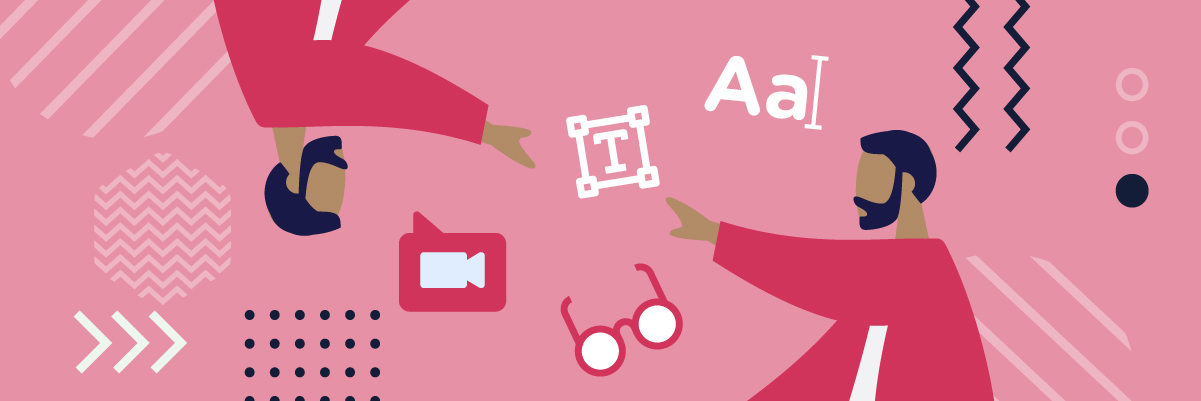In this age of technology, the best medium that can help make learning more interesting is video. It is a powerful tool that can motivate, instruct, and engage viewers. Video technology opens many possibilities for learning and teaching using tools like free animation software. It thus makes it a great idea to learn about educational video production.
Educational video production provides a way for people to watch and learn at the same time. It is an excellent method of educating and reaching more of your viewers. There is great demand for educational videos. Students have more ways to engage with their studies thanks to technologies that make education more accessible. Statistics show that video is more dynamic and engaging. With video, teachers, managers, and leaders become more effective and creative, quickly reaching their audience anywhere in the world.
So, how can you take advantage of video content?
What Is Educational Video Content?
Educational video content is informative and valuable visual content. It should also be share-worthy to reach many people. There are all kinds of videos your company can use. Still, educational videos are the best at positioning you as an expert in your field. Educational videos give a significant advantage that you can’t miss not utilizing them for your strategy.
What kinds of videos are educational and that your company can use? There are plenty, such as behind-the-scenes or BTS videos of product production. Videos about the industry’s current trends are also popular. Or, you can create an animated infographic on any topic about your business. Turning your old blog posts into educational videos is also a good idea.
If you think knowing a particular topic will be beneficial for your audience, then that would be excellent content to use for your educational video. The good thing with this is that there are so many content or topics you can turn into videos. However, you will need a little bit of expertise to make the most of it, particularly in looking for an exact trending topic.

Why Is Educational Video Important?
The use of simple language is what makes it easier for people to understand complex topics. This is the main reason why educational videos are essential for businesses. Your audience won’t spend time listening to things they have a hard time understanding. The only way to get them to stay and listen to what you have to say is by simplifying it.
Is there any simpler way to do that than with video? Video, whether live or animated, makes storytelling more eye-catching and entertaining while helping viewers learn. It thus makes sense for a company to create inspiring lessons that will be useful in many ways. A library of educational videos can be beneficial both to your employees and customers.
When and How to Use Educational Video Content
Before starting your educational video production, you must establish when and how you use it. At which part of the funnel should educational videos be? It has to be at the top. The reason is that your goal for the videos is not to sell. The videos are there simply to make people aware and to help you build trust with the audience.
If you want to use educational videos successfully, then it is best utilized as an engagement tool. The advantage of these videos is you can use them to engage both your employees and your customers. As a tool in your content marketing campaign, you can use it on your social media to interact with users or your blog to educate your readers.
The Main Points of the Educational Video Production
Educational video production involves specific steps to follow in making successful educational video content. The production process does not have to be complicated or expensive. You can even do it on your own, but it is still best to hire a professional. Professional video creators have the skills, experience, and tools to create amazing educational videos.
Thus, you can trust the quality of their work. Since experts have worked with other clients many times, they also have better ideas on the industry’s trends and practices. At the same time, they can easily “get” how you want to use the videos and create them as you intended. But still, it is a great idea to have a general idea of how an educational video production goes.
There are three primary phases to video production, which are the same for educational videos. The only part that differs is the intention or the goal. As mentioned before, you are creating educational videos to teach or inform your audience. You will tackle this in the first part, which is the planning stage of the production.
Phase 1 – The Planning Stage
During this phase, you want to pinpoint the key message you want to tell your viewers. At this stage, you also need to identify your goals, audience, and video style. Next, you need to prepare the script and storyboard to direct how the video communicates your message. Once you have all of these, you can move on to the next phase – the actual video production.
Phase 2 – The Production Stage
Now that you have the content figured out, the production shifts to the technical aspects of filming and creating the video. You will likely be filming if you plan to use live video and animation if it leans more to graphic motion. Either way, the production stage will likely last days with the post-production as it involves editing both visuals and sound.
Phase 3 – The Sharing Stage
This stage is when the video is finally ready. Now you simply have to put your educational videos out there for your audience to see. You will have to distribute them on several platforms, sharing and applying some SEO techniques. Of course, you can’t forget to employ analytics to know if your marketing efforts show positive results.
Planning your Educational Video
The first part of educational video production involves planning, where you identify your goals and message. You are looking for the point of why you are making the video. There is no point in an educational video if it cannot communicate your message effectively. Therefore, you first want to make sure to create an organized, professional-looking, and sounding video.
Are you confident you can do this? If you think so, then by no means go ahead. But if you don’t, then it is best left in the hands of experts. The most important part of this step is to create a creative brief, a kind of questionnaire that answers all your questions. Accomplishing one will outline your goals, key message, audience, and others to make a successful educational video.
Different Styles of Educational Videos
Another thing about educational video production that is helpful to know is the different educational videos’ styles. There are various styles, and each one has a unique impact on the viewers, which you should note. These differences will help you pick the right style that suits your idea of the best educational video content.
· Traditional educational video
This is also known as a full-featured educational video complete with all elements. It means the video has both a-roll and b-roll, graphics, photos, texts, voice, and narration. It is a complete video production that caters to all of the viewers’ senses.
· Imagery and Narration Voice-Over
As the name suggests, this educational video uses imagery along with narration voice-over to tell the message. It is a simple style without any on-screen person to present the information or speak to the camera.
· Image and Text Only
This style involves the elements you can probably already guess – only imagery and text. This means it uses animation, stills, and b-roll video. Along with that, the video may have music too. However, it does not have any voice-over at all.

Educational Video Production Best Practices
Thanks to today’s technology, it has become so much easier to create educational videos. It will be great to consider the following best practices in creating videos for educational or training use. Applying them in educational video production ensures that you can make the most out of the video content you produce.
There are three important factors to consider when creating an educational video.
1. Creates Community
Creating a community with educational videos is essential to helping the audience reach outside their comfort zone. One way to achieve this is by the instructors starring in the videos themselves. Seeing the face and hearing their instructor’s voice help the viewers get to know their trainer/teacher. With this, you can have a sense of safety that fosters growth and development.
2. Short but Concise
It is excellent to engage multiple senses of your viewers, especially their sight and hearing. Doing so will significantly improve their ability to understand a concept. However, keep in mind not to overwhelm your learners. You can avoid this if you keep your video short, ideally 10 minutes or less. More importantly, the information presented is concise. Sticking to only one skill or concept for every video and cutting it down into segments are excellent tips to try.
3. Accessible to All
Ensuring your educational videos are accessible to all is how you can optimize the teaching and learning experience for all learners. Of course, this includes learners with disabilities. There are various methods you can foster accessibility, such as the use of closed captioning and subtitles for those with hearing problems. You can also provide an audio description of the video content to help viewers who are visually impaired.
Looking for Educational Video Production Experts?
Have you decided to include educational videos in your content marketing campaign? Bunny Studio is ready to help.
While educational video production is not too hard to do yourself, enlisting a professional’s help is still best. Bunny Studio can guarantee that with us, you get compelling videos that will capture any audience.
Let us know your project details and help you get started!










